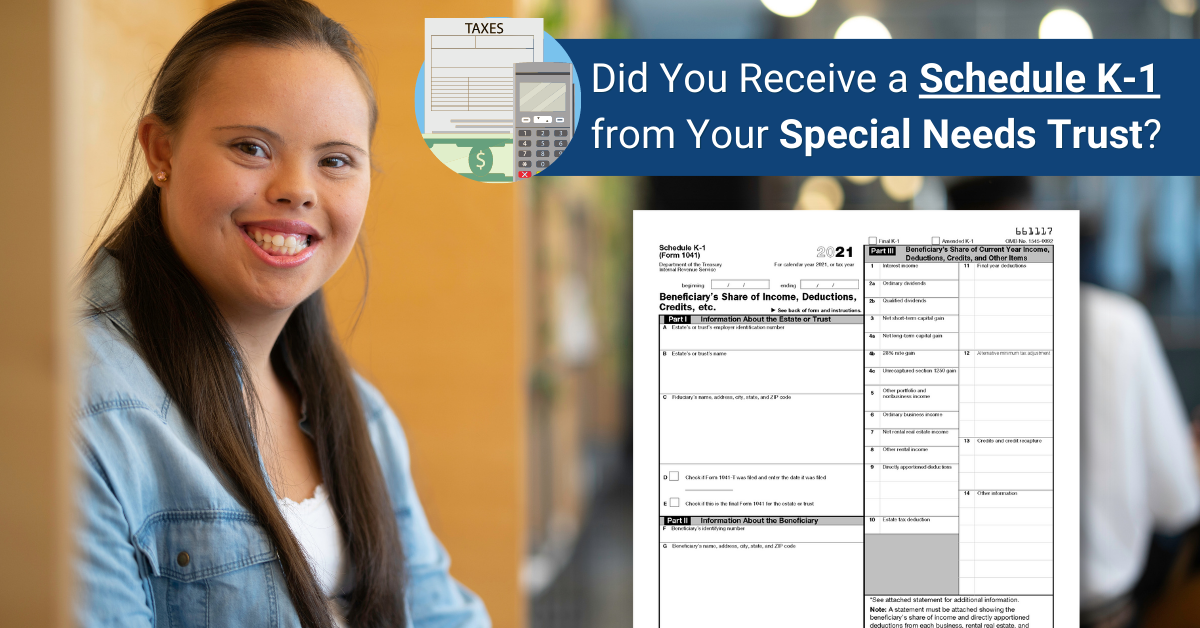At BLISS 1041, we understand that managing your finances as a beneficiary of a pooled special needs trust can feel overwhelming. One of the challenges you may face is what to do when you receive a 1041 Schedule K-1. This document, while essential for tax purposes, can be complex to navigate. In this comprehensive guide, we’ll walk you through what this document is, why it matters, and what you need to do once you’ve received it.
Understanding the 1041 Schedule K-1
A Schedule K-1 is a tax document used to report a beneficiary’s share of income, deductions, and credits from a trust or an estate. When a pooled special needs trust generates income, the trust must file an IRS Form 1041, also known as U.S. Income Tax Return for Estates and Trusts. The Schedule K-1 is a part of this return and provides detailed information about the beneficiary’s portion of the income or losses.
Why the 1041 Schedule K-1 Matters
The Schedule K-1 is essential because it provides the information you need to complete your own tax return. The income, deductions, and credits reported on the Schedule K-1 must be included on your personal tax return (Form 1040). Notably, some of the income you receive from the trust might be exempt from income tax, while some deductions and credits could reduce your overall tax liability.
Steps to Take After Receiving a 1041 Schedule K-1
- Review the Document: The first thing to do when you receive a Schedule K-1 is to review it thoroughly. Ensure the information aligns with your records and expectations. If you notice discrepancies, contact the trustee or the tax professional who prepared the Schedule K-1 for clarification.
- Consult with a Tax Professional: Depending on the complexity of your financial situation, you may need to consult with a tax professional. They can help you understand the impact of the income, deductions, and credits reported on the Schedule K-1 on your personal tax liability.
- Incorporate Information into Your Tax Return: Use the information from the Schedule K-1 to complete your personal tax return. Remember, any income, deductions, or credits reported on the Schedule K-1 must be included on your personal tax return. There is typically a second page that explains where each item on the K-1 should be reported on your personal income tax return.
Receiving a 1041 Schedule K-1 from a pooled special needs trust doesn’t have to be a daunting process. With the right resources and guidance, it can be a seamless part of your financial management. At BLISS 1041, we’re here to help guide you through these complexities, ensuring you’re equipped to navigate your financial journey successfully.
Disclaimer: The information provided in this blog post is for educational purposes only and is not intended to be construed as legal or tax advice. While we strive to provide accurate and up-to-date information, laws and regulations often change, and the application of them can vary widely based on the specific facts and circumstances involved. Therefore, you should always consult with a qualified tax advisor or legal professional before making any decisions or taking any actions based on the information provided in this blog post.

